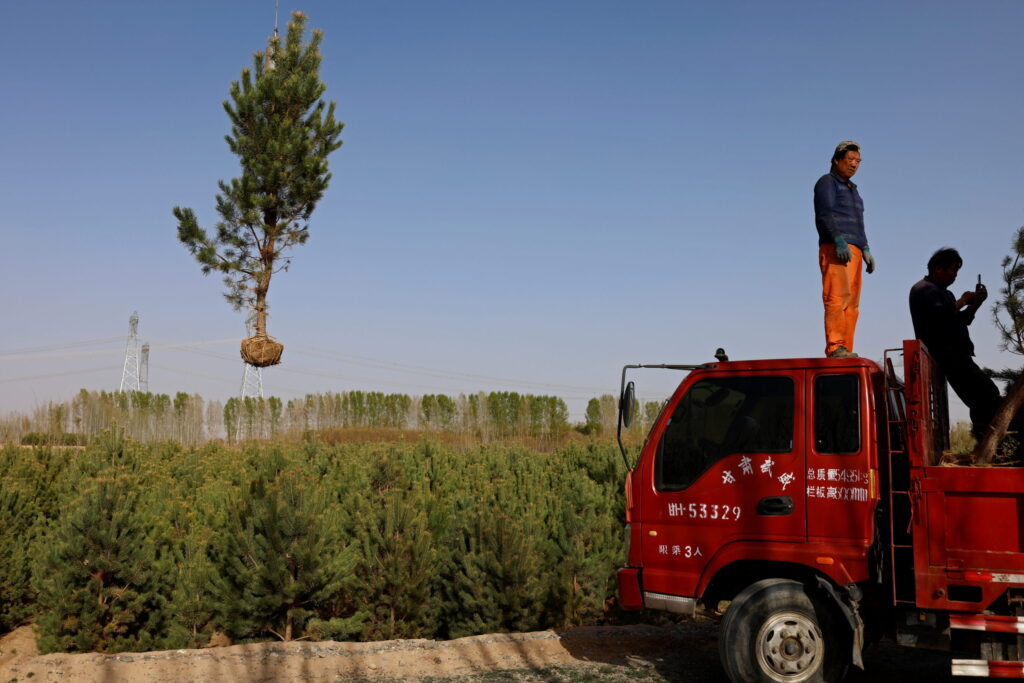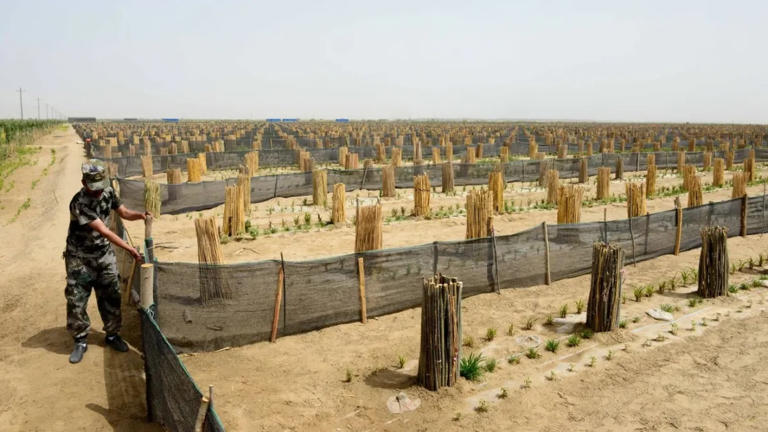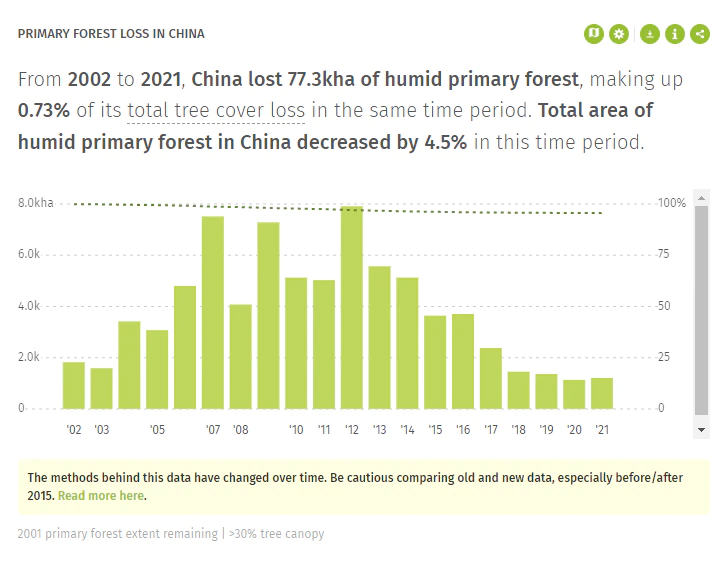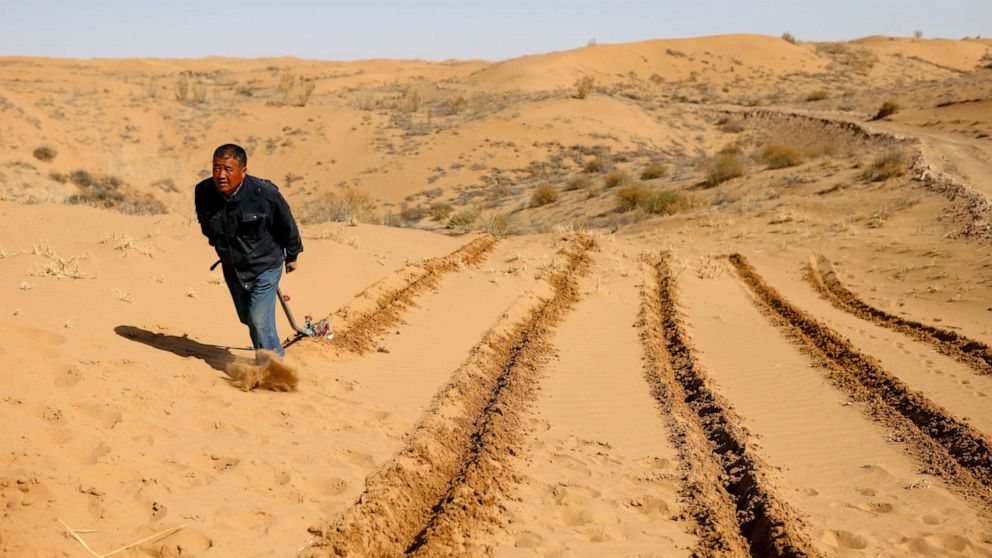Will China’s big plan to plant artificial greenery around the Gobi Desert fail? China was considered as the nation with the most artificial woods in 2009, with over 500,000 square kilometres of land covered. Rewinding a year, the World Bank encouraged China to concentrate more on ‘quality,’ citing the destruction of almost 10% of its new forest inventory due to winter storms.

Will China’s big plan to plant artificial greenery around the Gobi Desert fail?
During the late 1970s, China made an unprecedented decision to embark on afforestation. As a result, by 2011, it stood out on the global arena for being the most ‘environmentally conscious’ nation among all others. China’s “Great Green Wall” Called “Three-North Shelterbelt Program,” not to be confused with its African counterpart, altered the parched territory around the Gobi Desert with a gigantic scale of human-planted homogeneous forest strips, including species that were utterly alien to the continent.
Similar to the United States’ “Great Plains Shelterbelt” and the Ussr’s “Great Plan for the Evolution of Nature,” the move conceived increasing makeshift vegetation to act as a natural barrier against persistent sandstorms, as well as to dissuade further growth of the Gobi desert in years ahead. Nevertheless, the endurance of the it was not tested. China was considered as the nation with the most artificial woods in 2009, with over 500,000 square kilometres of land covered. Rewinding a year, the World Bank encouraged China to concentrate more on ‘quality,’ citing the destruction of almost 10% of its new forest inventory due to winter storms.

As per CGTN, China’s overall forest area increased to 22.96% in 2019, spanning 220 million ha in total, with planted trees accounting for 80 million ha of the land.
In an attempt to provide a push the current Three-North Shelter Forest initiative, China concurrently created the “Grain for Green” programme in 1999. The “Conversion of Cropland to Forest Program” (CCFP) aimed to establish a “green shield” to protect against recurrent flooding and soil erosion. In essence, the government pays farmers to convert their croplands into monoculture forests. Yet, it comes with its own drawbacks, since genuine trees may be burnt in order to gain more advantages.
According to a 2018 research that reviewed satellite data and interviewed 166 inhabitants of the programme located in China’s Sichuan province between 2000 to 2015, locals were motivated to follow government directions and tended to plant species that were encouraged, at times even taking down native trees.

The monoculture vegetation is largely composed of poplar trees, and it is continually vulnerable to being destroyed in an instant if it is influenced by causes to which the species is allergic. An same event occurred in 2000, whenever one billion poplar trees in Ningxia were destroyed to a single disease, rendering 20 years of replanting efforts futile. Giving space to biodiversity endeavours rather than a single type is one answer.
Furthermore, in order to combat other issues like as sandstorms and desertification, big-scale plantations have already been soaking up significant amounts of groundwater under the land surface, which is currently scarce in dry regions such as Northern China. Meanwhile, the viability of these non-native species has plummeted because of low water retention levels and a need for a fruitful environment to flourish in.
The soil, which has steadily reduced in strength because of China’s high pollution rates, should be the emphasis in order to sustain such a thick kind of flora. As a result, trees that typically live for millennia are dying within years.
According to Global Forest Watch, the total land area of moist forest area in China deteriorated by 4.5% between 2002 and 2021. “In 2010, China held 133 million ha of natural forest, equivalent to 16percent of its entire land area,” according to the research. It will have lost 420 hectares of natural forest by 2021, which is equivalent to 170 million tonnes of CO2.”

Such transitory vegetation aimed solely at achieving carbon neutrality by 2060 may not be effective in the future, as the plan may have a far-reaching detrimental impact, paving the path for fast desertification, poor soil health, and water shortages.
According to the findings of a recent study in this field, “Since the carbon density of arbour forests will not benefit substantially from global warming, future afforestation, reforestation, and environmental protection programmes must be sensibly planned and strengthened to meet future carbon targets. We propose that further steps be done in places with high carbon density, such as Southwest China.”
All things aside, it is nearly difficult to battle China’s ever-increasing levels of pollution with reforestation, as good soil is essential for achieving long-term greenery in the region.
Specialists in the subject are still working out the larger ramifications of the two initiatives for the economic situations of the people who live in these locations.
Read more:
Venus and Jupiter are planning a midnight kiss this 2023
Lori Lightfoot: Chicago Mayor Election Vote Results 2023